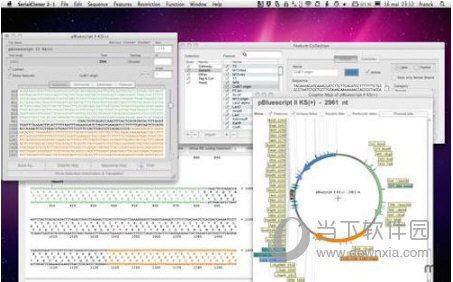

Choose large, well-established colonies for analysis.Use fresh plates with fresh antibiotics.Increase the antibiotic level on plates to the recommended amount.

When digesting a PCR fragment, make sure to have at least 6 nucleotides between the recognition site and the end of the DNA molecule.Clean up the DNA to remove any contaminants that may inhibit the enzyme (NEB # T1030).Use the recommended buffer supplied with the restriction enzyme.Check the methylation sensitivity of the enzyme(s) to determine if the enzyme is blocked by methylation of the recognition sequence.Restriction enzyme(s) didn’t cleave completely High-fidelity enzymes will remove any non-templated nucleotides. Clean up the PCR product prior to A-tailing (NEB # T1030).Do not use > 1 unit of enzyme/μg DNA or incubate the reaction > 30 minutes. When using Mung Bean Nuclease (NEB # M0250), incubate the reaction at room temperature.Make sure to add a sufficient amount of dNTPs to the reaction (33 μM each dNTP for DNA Polymerase I, Large (Klenow) Fragment, NEB # M0210 and 100 μM each dNTP for T4 DNA Polymerase, NEB # M0203).

Do not incubate at temperatures > 12☌ (for T4 DNA Polymerase, NEB # M0203) or > 24☌ (for Klenow, NEB # M0210).Use a strain that is deficient in McrA, McrBC and Mrr, such as NEB 10-beta Competent E.The insert comes directly from mammalian or plant DNA and contains methylated cytosines, which are degraded by many E. Select a recA- strain such as NEB 5-alpha ( NEB #C2987), NEB 10-beta ( NEB #C3019) or NEB Stable (NEB # C3040) Competent E.The number of colonies in this control should be 10 kb), consider using electroporationĬonstruct may be susceptible to recombination Transform the cut vector to determine the amount of background due to undigested plasmid.Transform 100 pg–1ng of uncut vector to check cell viability, calculate transformation efficiency and verify the antibiotic resistance of the plasmid.These controls may help troubleshoot which step(s) in the cloning workflow has failed. We strongly recommend running the following controls during transformations. Identification and Biosynthesis of a Novel Xanthomonadin-Dialkylresorcinol-Hybrid from Azoarcus sp.Home Tools & Resources Troubleshooting Guides Troubleshooting Guide for Cloning Troubleshooting Guide for Cloning Schöner TA, Fuchs SW, Reinhold-Hurek B, Bode HB The Serine-Threonine Protein Kinase PAK4 Is Dispensable in Zebrafish: Identification of a Morpholino-Generated Pseudophenotype PLoS One Validation of microinjection methods for generating knockout mice by CRISPR/Cas-mediated genome engineering Sci Rep Horii T, Arai Y, Yamazaki M, Morita S, Kimura M, Itoh M, Abe Y, Hatada I Transcriptomic analysis of carboxylic acid challenge in Escherichia coli: beyond membrane damage PLoS One Royce LA, Boggess E, Fu Y, Liu P, Shanks JV, Dickerson J, Jarboe LR Insights into bacterial CO2 metabolism revealed by the characterization of four carbonic anhydrases in Ralstonia eutropha H16 AMB Express Gai CS, Lu J, Brigham CJ, Bernardi AC, Sinskey AJ Molecular evolution of the Yap/Yorkie proto-oncogene and elucidation of its core transcriptional program Mol Biol Evol Ikmi A, Gaertner B, Seidel C, Srivastava M, Zeitlinger J, Gibson MC Neurospora crassa Female Development Requires the PACC and Other Signal Transduction Pathways, Transcription Factors, Chromatin Remodeling, Cell-To-Cell Fusion, and Autophagy PLoS One
SERIAL CLONER PRIMER EFFICIENCY FREE
For more information, visit .Ĭhinnici JL, Fu C, Caccamise LM, Arnold JW, Free SJ Have you tried NEBuilder HiFi DNA Assembly? NEBuilder HiFi offers several advantages over NEB Gibson Assembly. To help select the best DNA assembly method for your needs, please use our Synthetic Biology/DNA Assembly Selection Chart. capricolum recipient cell, creating new self-replicating M. The synthesized genome was transplanted to a M. In combination with in vivo assembly in yeast, Gibson Assembly was used to synthesize the 1.1 Mbp Mycoplasma mycoides genome. Applying this methodology, the 16.3 kb mouse mitochondrial genome was assembled from 600 overlapping 60-mers(1). This method has been widely adopted and is a major workhorse of synthetic biology projects worldwide. The reaction is carried out under isothermal conditions using three enzymatic activities: a 5’ exonuclease generates long overhangs, a polymerase fills in the gaps of the annealed single strand regions, and a DNA ligase seals the nicks of the annealed and filled-in gaps. Craig Venter Institute, described a robust exonuclease-based method to assemble DNA seamlessly and in the correct order, eponymously known as Gibson Assembly.


 0 kommentar(er)
0 kommentar(er)
